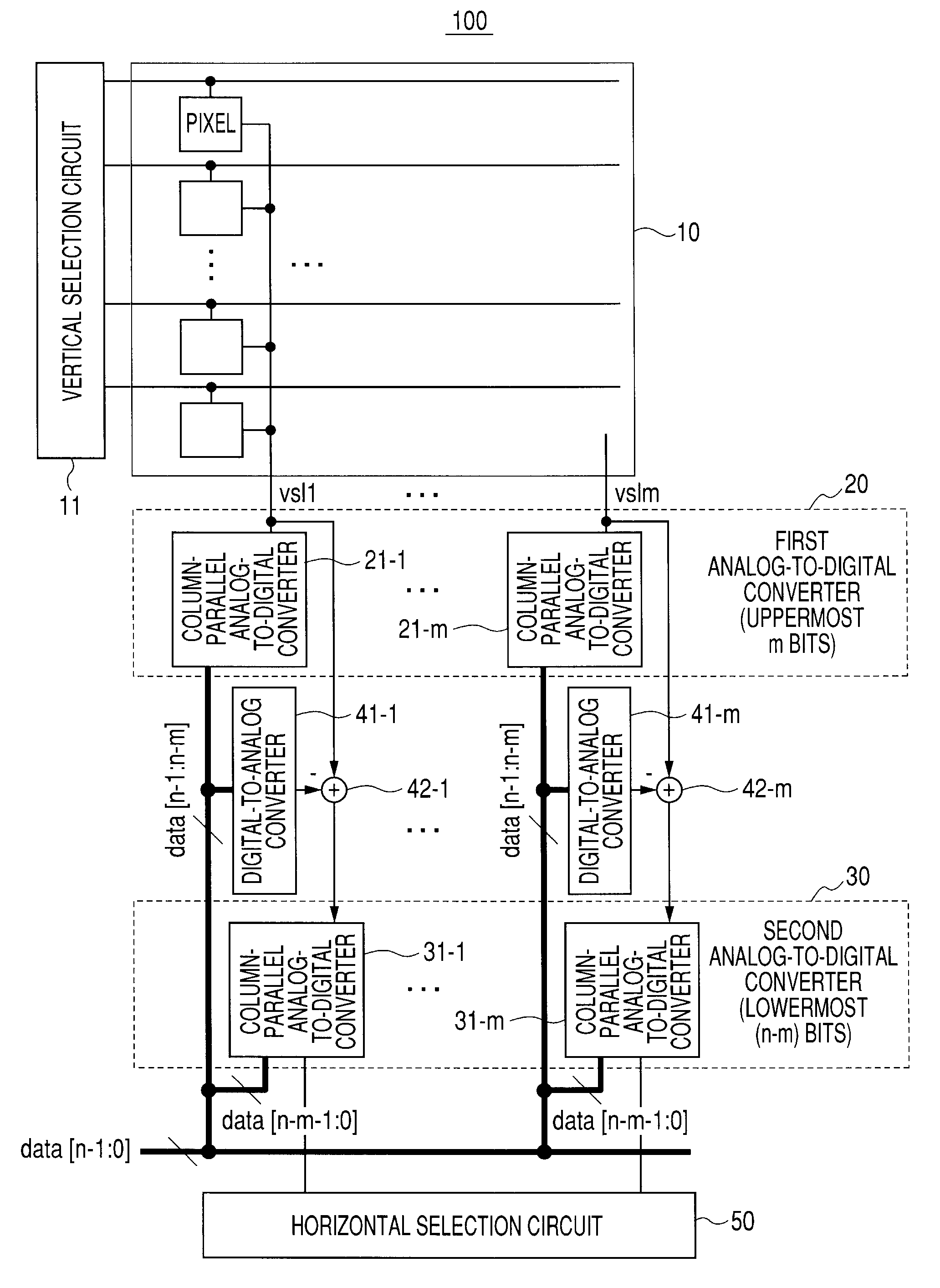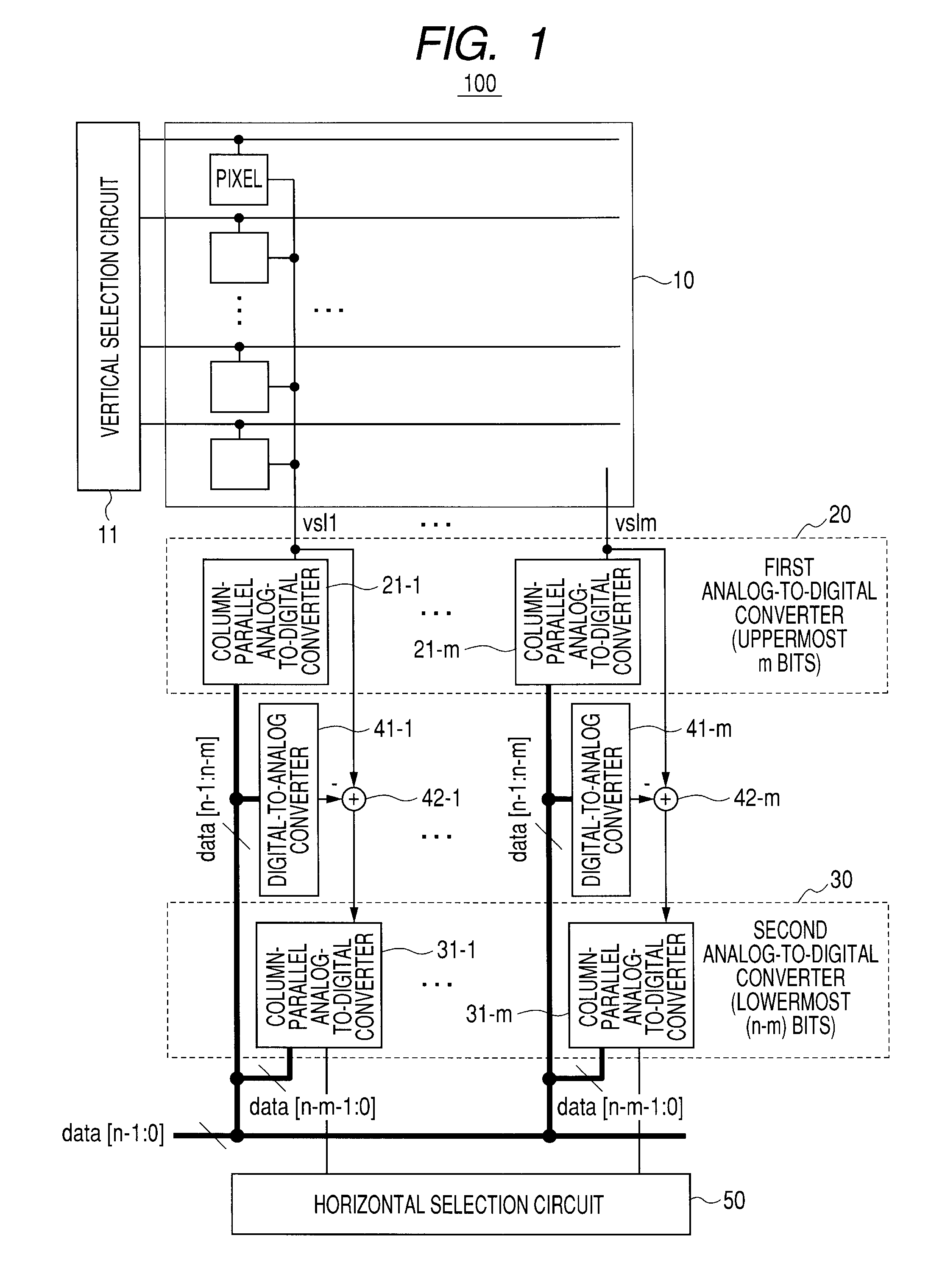Solid-state imaging device, method of driving the same, and camera
a technology of solid-state imaging and driving mode, which is applied in the direction of radio frequency controlled devices, instruments, television systems, etc., can solve the problems of increasing power consumption, increasing conversion time, and difficulty in implementing high-speed operation, so as to reduce conversion time, reduce conversion time, and moderate element accuracy
- Summary
- Abstract
- Description
- Claims
- Application Information
AI Technical Summary
Benefits of technology
Problems solved by technology
Method used
Image
Examples
Embodiment Construction
[0042]FIG. 1 is a diagram illustrating the block structure of a solid-state imaging device 100 including a column-parallel analog-to-digital converter according to an embodiment of the invention.
[0043]The solid-state imaging device 100 includes a pixel unit 10 which will be described later, a first uppermost m-bit analog-to-digital converter 20, a second lowermost (n−m)-bit analog-to-digital converter 30 (where, m and n are arbitrary positive integers and n is larger than m), a timing signal generator (not shown), a vertical selection circuit 11, and a horizontal selection circuit 50.
[0044]The timing signal generator (not shown) receives a vertical synchronization signal, a horizontal synchronization signal, a sensor driving clock, and a sensor reset signal from the external of a sensor of the solid-state imaging device 100. The timing signal generator generates a timing signal so as to drive the vertical selection circuit 11, the horizontal selection circuit 50, the column-parallel...
PUM
 Login to View More
Login to View More Abstract
Description
Claims
Application Information
 Login to View More
Login to View More - R&D
- Intellectual Property
- Life Sciences
- Materials
- Tech Scout
- Unparalleled Data Quality
- Higher Quality Content
- 60% Fewer Hallucinations
Browse by: Latest US Patents, China's latest patents, Technical Efficacy Thesaurus, Application Domain, Technology Topic, Popular Technical Reports.
© 2025 PatSnap. All rights reserved.Legal|Privacy policy|Modern Slavery Act Transparency Statement|Sitemap|About US| Contact US: help@patsnap.com



